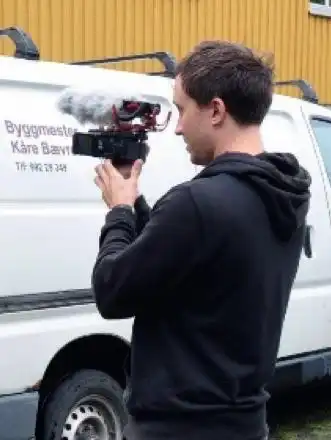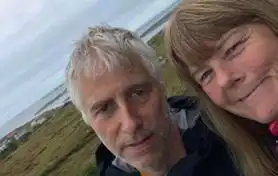
10 minute read
The Spitfire hunter, part 1
My Spitfire Odyssey The Year I Became A Spitfire Hunter Part 1 - Yes by Ian Hewitt
YES!
Advertisement
In Spring 2018, while travelling to one of the early season air shows, I received a call from an unknown number. Little did I know that the chap on the other end of the line was to become a friend and involve me in a story that I will no doubt tell for the rest of my life.
After a brief introduction, Tony Hoskins launched right in. Leaving little room for interjection, which I would come to learn is very much Tony’s way, Tony laid out his plan and how I could help make it happen.
With the full plan told I simply spoke a single word. I had no need of due consideration, no need for further time to assess the proposal, no need to number crunch, no diary that would not re-work around the dates. “Yes”…But I did have a condition. Tony’s expedition was to accommodate an additional team member.
Tony is a details person, he’d done his research on me and had pre assumed the likelihood of my one condition and therefore he too had no need for due consideration.
“Yes…we leave in three months, welcome aboard”.
And that was it, as simply as that I was enrolled as part of an expedition to Norway to find and dig up a Spitfire. I hung up my phone, punched the ceiling of the car and spoke the word again… ”YES”.
Sandy’s Story

The story that had drawn me in so quickly was that of a very special Spitfire, a rarest of breed Spitfire you might say, one of the Photographic Reconnaissance Unit. Spitfire AA810’s story was entwined with the life of the last pilot to fly her, a young man by the name of Alistair ‘Sandy’ Gunn.
For the purpose of this story I will outline the tale of Sandy Gun and Spitfire AA810, however the full story is told in entirety in Tony’s book Sandy’s Spitfire.
On 5th March 1942 Pilot Alistair Gunn lifted PRU Spitfire AA810 off the runway at Wick in Scotland and climbed to 25,000 ft. His mission, to photograph the infamous German battle ship the Tirpitz.
PRU Spitfires flew armed only with cameras. Their armaments having been replaced with cameras and additional fuel tanks to achieve the greater distances required of reconnaissance missions.
At around 12 noon Sandy dropped Spitfire AA810 down into the Trondheim Fjord to be picked up immediately by two waiting ME109 German fighter aircraft.
Flying as a pair the ME109’s took out AA810’s fuel lines, soon Alistair was on fire.
Leaving it as late as possible, Alistair bailed out suffering burns to his hands and his face in the process. He descended by parachute landing on the hills above Surnadal not far from where his Spitfire had impacted the snow covered mountain.
At the age of 22 years Alistair ‘Sandy’ Gunn found himself alone in the harshest of environments behind enemy lines. With his parachute having drawing the attention of the local Surnadal garrison, his situation was hopeless.
On his capture Sandy was driven from Trondheim to Oslo where he was interrogated for almost a month. Finally, he was sent on to the new Camp Stalag Luft III.
As one of the first prisoners to arrive Sandy was soon joined by others and between them they hatched a plan to escape.
Spitfire AA810 a rarest of breed Spitfire


Alistair joined the tunnelling committee, although their first tunnel was discovered they were soon put to work on a second longer tunnel, codenamed Harry, and Harry was to become known the world over, made famous by the film The Great Escape.
Alistair was paired with Mike Casey to be the 63rd pair to enter the tunnel. On 24th March 1944 Alistair and Mike disappeared into the night.
Travelling to the Swedish border by hanging onto the underside of freight trains the two got to within 25 miles from Stettin, but were sadly
captured by the Gestapo late on the 26th March.
Hitler was infuriated by the Stalag Luft III escape and order that 52 of the captured escapees be executed.
On 6th April 1944 at the age of twenty four pilot Alistair ‘Sandy’ Gunn was murdered by the Gestapo.
He rests in peace alongside his fellow murdered prisoners in the Commonwealth War Grave Cemetery in Pozna.
Seventy years after Sandy’s death I found myself flying out to Trondheim, as part of an expedition to locate, retrieve and repatriate Sandy’s Spitfire.
Travelling to the edge of the Arctic Circle to dig up and return the remains of a historically important Spitfire is the stuff of comic book ‘Boys Own’ dreams. I felt humbled and honoured to be involved.
Excluding yours truly Tony had put together a crack team of UK Spitfire Hunters. I would meet the team for the first time in a hotel at midnight in a town called HELL!
Gods – Expedition actually means freight service or cargo handling, but hey, what a sign to be greeted by!
Having accustomed myself to the price of alcohol I settled down to an evening in Hell and awaited the arrival of the five other UK team members with whom I would be spending the next ten days, not in Hell, we were moving out to Surnadal in the morning.
The entire expedition was to consist of six members of team UK and nine members of team Norway. Team UK was supplying the historical and technical expertise, with team Norway providing the muscle and the local knowledge.


I’LL SEE YOU IN HELL!
TEAM UK


Ask Tony what he does and he’ll tell you that he is an Engineer, which he undoubtedly is. Working on vintage aircraft restorations out of Biggleswade with Kennet Aviation.
Dig a little deeper and you’ll find that
Tony Hoskins - Expedition Leader
Tony is a TV historian/engineer, an author, a Spitfire hunter and director of Spitfire AA810 restoration limited. You’ll also find him evangelical in his pursuit for national recognition for the men of the Photo Reconnaissance Units.
The term historian would suggest a book worm tucked away in a library somewhere. No doubt Peter has his moments. However, Peter’s incredible knowledge has for the most part been gathered by being on the ground and in the air.
Having dedicated a life time to hunting down Spitfires from all over the world, Peter is your go to person when planning a war bird recovery.

Peter Arnold – Spitfire Historian
Left to right
Mark Hilliar – Author and Historian
Mark has a deep knowledge of the history of the RAF, with a particular focus on the Second World War and has written many books on the subject. He is also a qualified pilot, having flown for more than twenty-five years.
Mark Khan – Author and Historian
After serving in the Royal Regiment of Artillery Mark now specialises in weapon

systems and ordnance. Mark has also worked as a UXO researcher and as a media consultant, as well as being a published author.
Mark’s expertise in military ordnance brought a dynamic as it happened insight into the final minutes of Spitfire AA810.
Yours truly
Yes, that’s me, the guy on the right suffering from imposter syndrome!
After introductions, a few beers and much excitement at the prospect of what the days ahead might yield, we retired to our rooms with thoughts of buried Spitfires in our heads.
Then, in no time at all we were travelling once more, in glorious sunshine through scenery that inspired and lifted the soul. In two hours we would be in Surnadal.
Surnadal is a sleepy town that looks out across a vista of broken fjords that drain into the Norwegian sea, beyond which lies Iceland. For us Surnadal would be a place of meadow flowers, of green green grass and vivid forests. This is the time for growing, for pickling and chopping and digging, but in no time at all Surnadal would be returned once more to the ice and the cold and the long dark days.
We were determined that Spitfire AA810 would not spend another year frozen in the cold and the dark. 75 five long Nordic winters was time enough time to bring her home.

But first there were respects to be paid.
REFLECTION
Shortly after the end of the War Sandy’s parents visited Poznan intent on returning their son’s remains to his family home in Edinburgh. However, on visiting Sandy’s grave it was decided that their son was well tended for and should rest in peace in Poznan.
We six stood in silence before that very same grave, the grave of a young man that none of us had ever known, I had no family connection to, no historical bond with. And yet here I stood bound to these five strangers and bound to this young man who had died seventy-four years earlier and to whom we six had made a commitment.
We would find Sandy’s Spitfire for him, we would bring her home and we would endeavour to make her fly again and we would remember the men of the Photo Reconnaissance Unit.

SPITFIRE IN THE COMMUNITY
To a 1940s farming community in rural Norway a Spitfire, even one that had crashed in flames was a thing of value. Motors, engine parts, cabling, aluminium, bolts all could be repurposed and re used, brought back to life. Over the decades Spitfire AA810 had literally become a part of the Surnadal community.
Prior to trekking up to the crash site we enlisted the help of Frode Foss and Lilli Husby to convince the people of Surnadal to give up their Spitfire booty. Weeks prior to our arrival villagers had started returned pieces to the Husby’s, their garage had become a treasure trove of Spitfire parts.
Alex Hocking - Development Producer
As DP for 360 productions Alex was responsible for the filming and documenting of the expedition for the Digging for Britain television show.
Typical of his kind you’ll rarely find Alex on the other side of a camera.
The Commonwealth War Grave Cemetery in Poznan is a quiet, pleasant place, welltended for and friendly.
Lilly & Frode

Me with my first Spitfire prop complete with bullet hole


My personal favourite example of re-purposing was the part merlin powered Zondap motorcycle that had been delivering the post to the community since the Germans left.
With the contents of the Husby’s garage and the wings sections from under the hall safely loaded on our van we turned our attention to the following day.
At dawn we were heading into the mountains on foot in search of Sandy’s Spitfire.

Read Part 2, To The Mountain, in the October edition of the Lancashire Magazine
Then off to the village hall under which we would find the wing sections.





